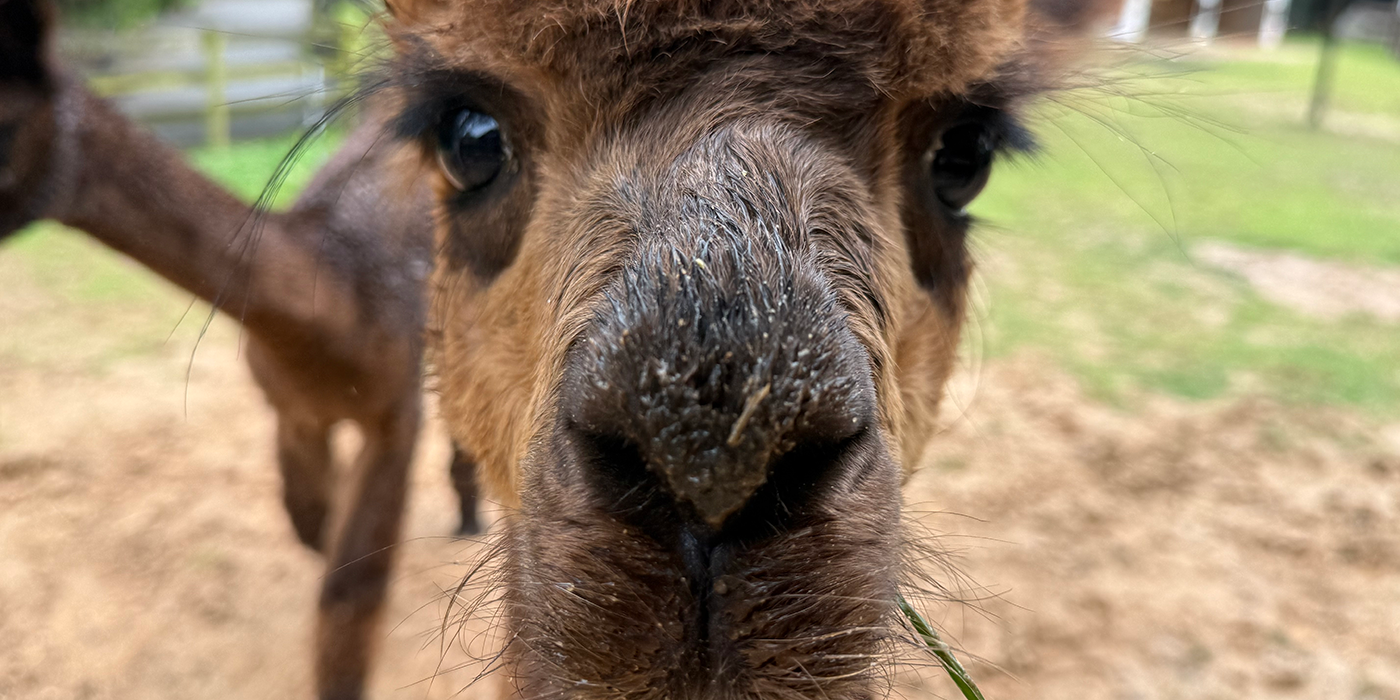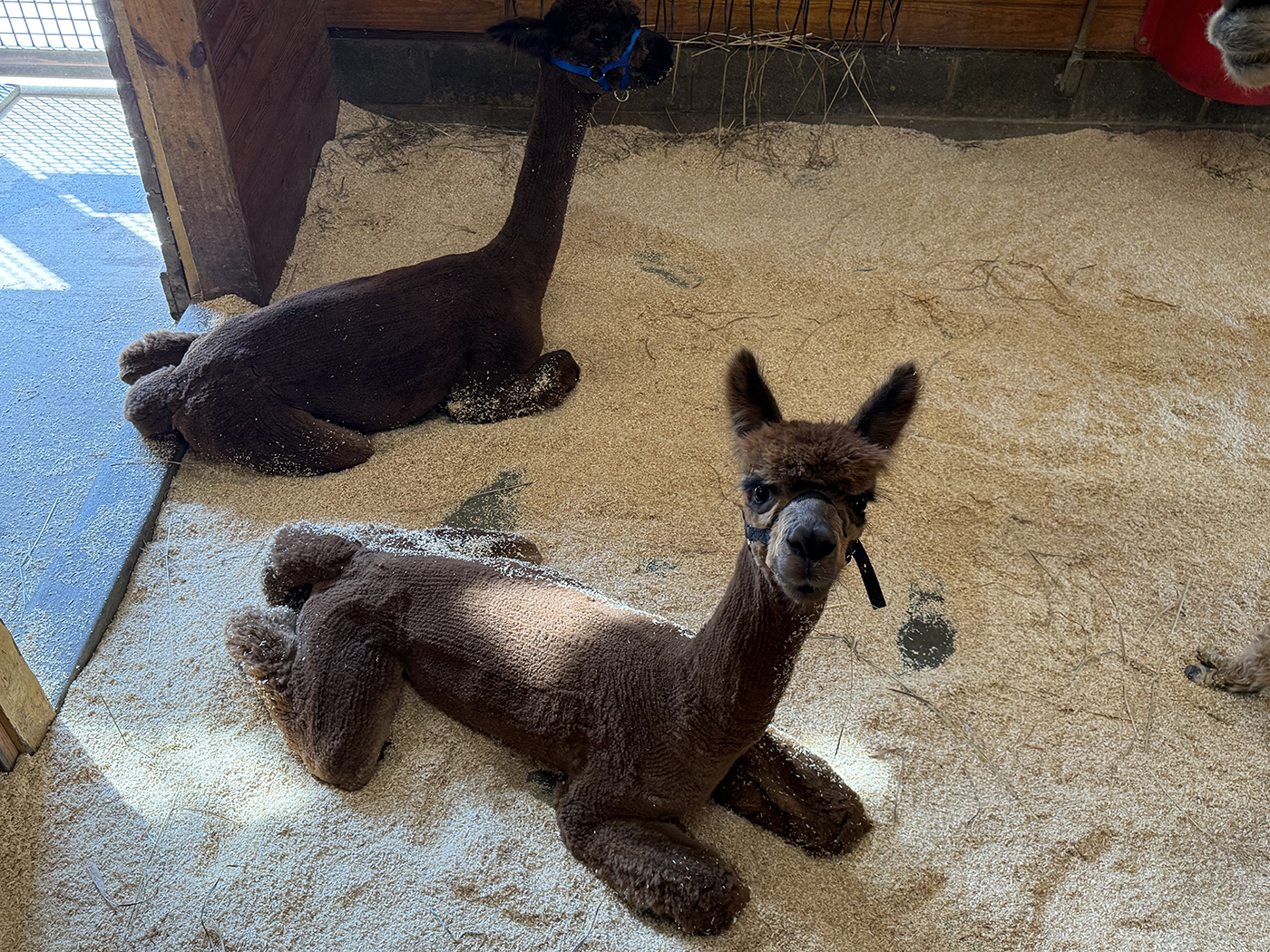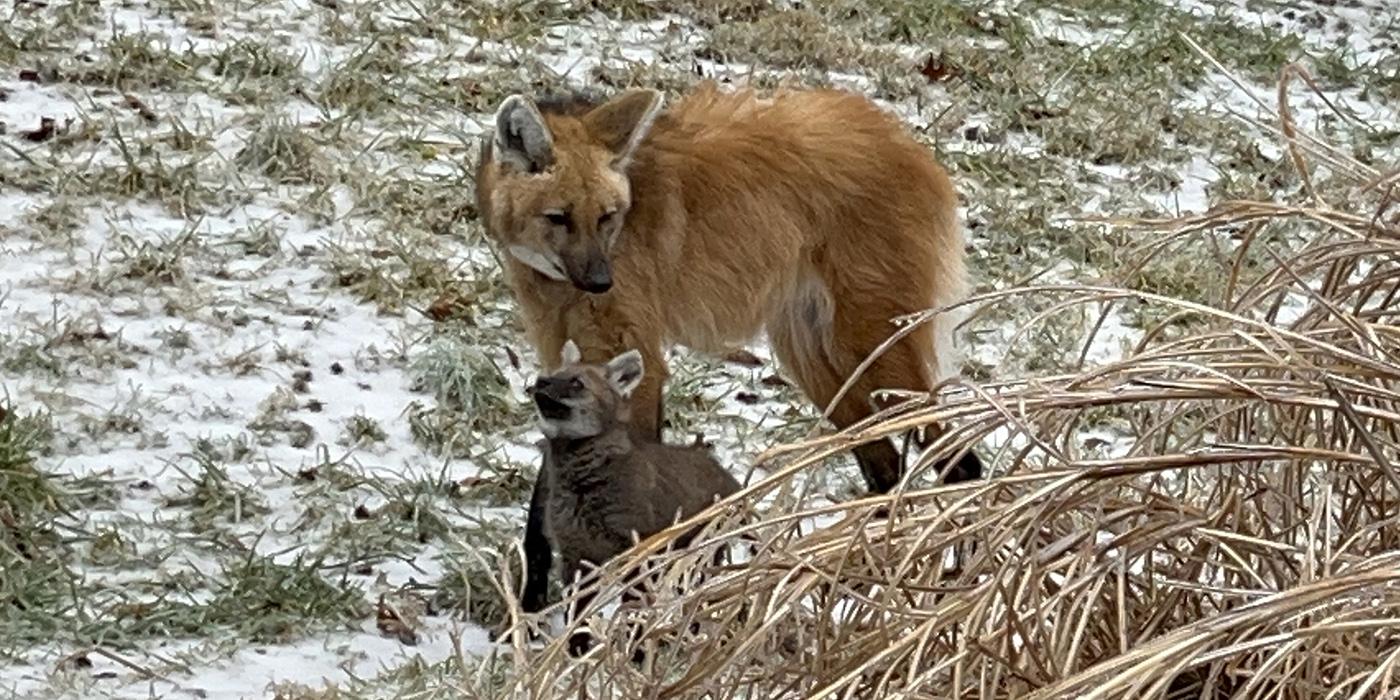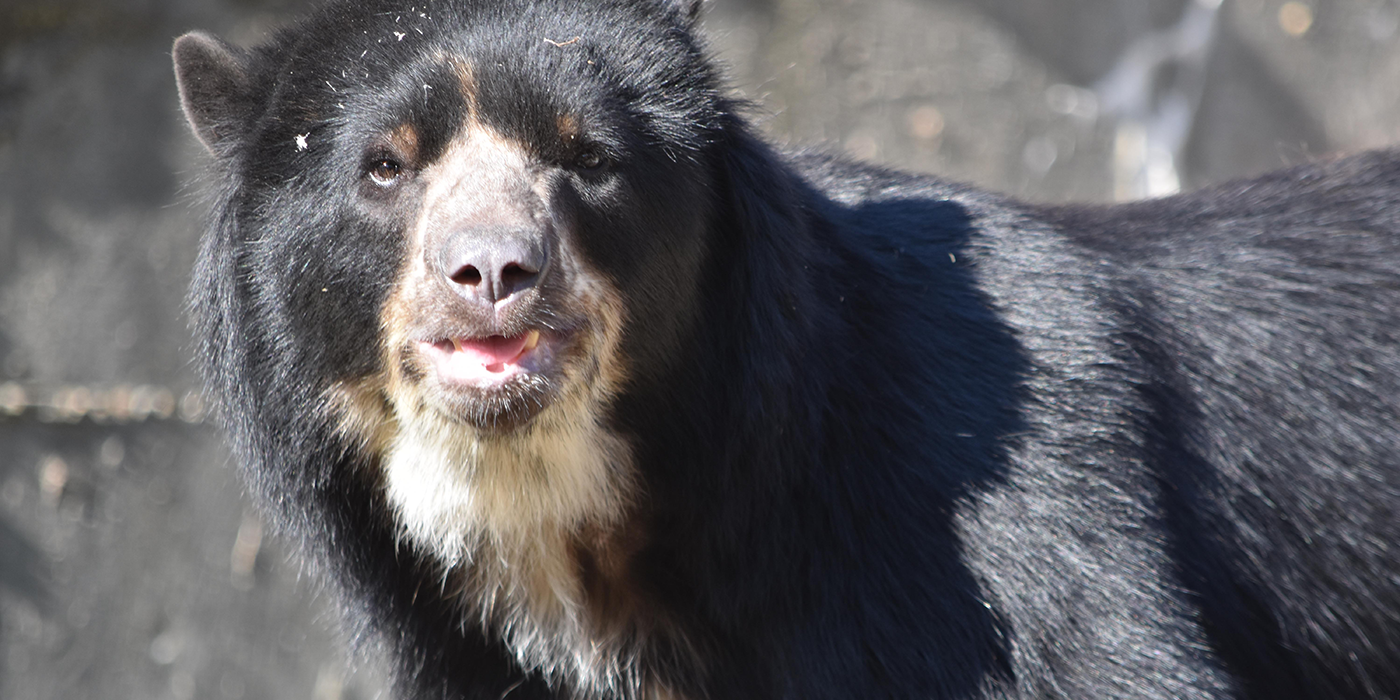Zoo Welcomes Alpacas ‘Rainstorm’ and ‘Coffee Cup’

Fuzz fans, rejoice! Two new alpacas, Rainstorm and Coffee Cup, have made their debut at our Kids’ Farm exhibit.
Soon after they arrived from a farm in Maryland, the pair wasted no time in exploring their outdoor habitat, said Kids’ Farm keeper Nikki Maticic. The keepers are still getting to know the new additions, but the team reports that both young males are very curious and seem to enjoy watching their keepers and the other animals at the Farm.
“They’ve even let out a few good zoomies in the yard already,” said Maticic.
Alpaca alpersonalities
Rainstorm, left, and Coffee Cup, right, arrived at the Kids’ Farm earlier this spring. (Smithsonian/Nikki Maticic)
Alpacas are social animals and are most comfortable living in herds. Coffee Cup and Rainstorm will be joining a herd with two other members of their species, Orion and Cirrus.
Coffee Cup (born Aug. 23, 2023) is the shorter of the pair, with lighter brown hair. Rainstorm (born June 21, 2023) is taller and has darker brown coloring on his snout and on the tips of his ears. Coffee Cup is the more adventurous of the pair, especially when interacting with his caretakers, whereas Rainstorm can be a bit more cautious.
Visitors to the Kids’ Farm exhibit can expect to see Coffee Cup and Rainstorm exploring their exhibit yard, possibly nibbling the grass around the yard or sunbathing after a dust bath.
What are alpacas?
Alpacas are large, hoofed animals native to South America. Although they are often mistaken for llamas, alpacas are a different but related species. Both are in the camelid family.
Alpacas were first thought to have been domesticated around 6,000 years ago by communities living in the mountainous regions of Peru and Bolivia. Alpacas have traditionally been raised for their soft, fluffy fleece, which is similar to sheep’s wool.
In recent decades, alpacas have spread to farms and ranches around the world. At the Smithsonian’s National Zoo, the alpacas live alongside other typical farm animals, like cows, donkeys, chickens, goats, and pigs.
Haircuts and hoses: an un-zoo-sual care routine
At the Zoo, keepers care for alpacas by shearing their woolly coats each springtime. The short coats help the animals stay cool in the summertime. By the fall, their coats have usually grown thick again, which protects them during the colder winter months.
Summer heat can be a lot of these mountainous animals, so keepers give the animals plenty of opportunities to stay cool. Guests at the Zoo may see keepers setting up water misters and sprinklers, giving the animals fans to sit in front of, or even spraying the alpacas with a hose!
Watch a video of Coffee Cup and Rainstorm being gently sprayed by the hose:
Like many animals, alpacas give themselves dust baths to help stay cool. Watch a video of Rainstorm and Coffee Cup rolling in the dust:
The Zoo’s alpacas eat a diet of mixed grasses and fortified herbivore pellets—and occasionally treats. Keepers give the animals special diet items to encourage training and build positive relationships, especially important with new arrivals.
Watch as Rainstorm munches on a piece of carrot:
How the Smithsonian’s National Zoo cares for alpacas
At the Zoo’s Kids’ Farm exhibit, visitors of all ages can get up close and personal with barnyard animals. Kids’ Farm is the only part of the Zoo where guests may have the opportunity to touch the animals on exhibit, although each animal is given to the choice to approach the visitor-side railing or keep to themselves.

Coffee Cup, left, and Rainstorm, right, rest inside the barn at Kids’ Farm. (Smithsonian/Nikki Maticic)
Even though alpacas are widespread and are not considered endangered, many barnyard animals, including heritage breeds, are faced with an uncertain future.
Maticic said that by inviting visitors to connect with barnyard animals like Rainstorm and Coffee Cup, guests will be better able to understand the importance of the Zoo’s efforts to save lesser-known species on the brink of extinction.
“Our new alpacas, along with Orion and Cirrus, are excellent ambassadors for their species... All of our alpacas have such different personalities, and we hope that visitors are able to make connections with them and want to learn more about our animals,” she said.
Want more Zoo updates? Sign up for the National Zoo News and get updates on animal care, zoo events, and conservation delivered straight to your inbox.
Related Species:


